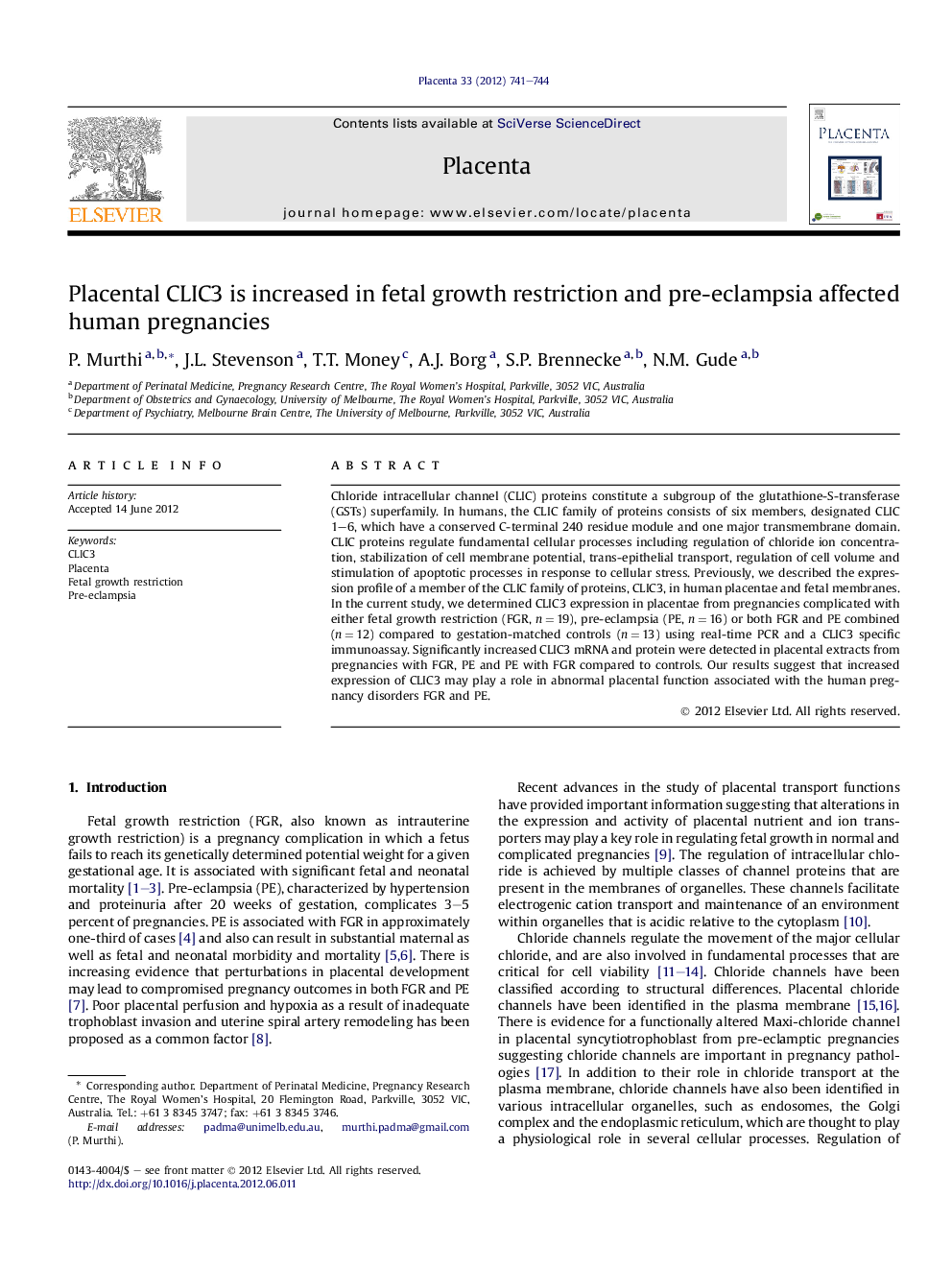| Article ID | Journal | Published Year | Pages | File Type |
|---|---|---|---|---|
| 5895369 | Placenta | 2012 | 4 Pages |
Chloride intracellular channel (CLIC) proteins constitute a subgroup of the glutathione-S-transferase (GSTs) superfamily. In humans, the CLIC family of proteins consists of six members, designated CLIC 1-6, which have a conserved C-terminal 240 residue module and one major transmembrane domain. CLIC proteins regulate fundamental cellular processes including regulation of chloride ion concentration, stabilization of cell membrane potential, trans-epithelial transport, regulation of cell volume and stimulation of apoptotic processes in response to cellular stress. Previously, we described the expression profile of a member of the CLIC family of proteins, CLIC3, in human placentae and fetal membranes. In the current study, we determined CLIC3 expression in placentae from pregnancies complicated with either fetal growth restriction (FGR, n = 19), pre-eclampsia (PE, n = 16) or both FGR and PE combined (n = 12) compared to gestation-matched controls (n = 13) using real-time PCR and a CLIC3 specific immunoassay. Significantly increased CLIC3 mRNA and protein were detected in placental extracts from pregnancies with FGR, PE and PE with FGR compared to controls. Our results suggest that increased expression of CLIC3 may play a role in abnormal placental function associated with the human pregnancy disorders FGR and PE.
